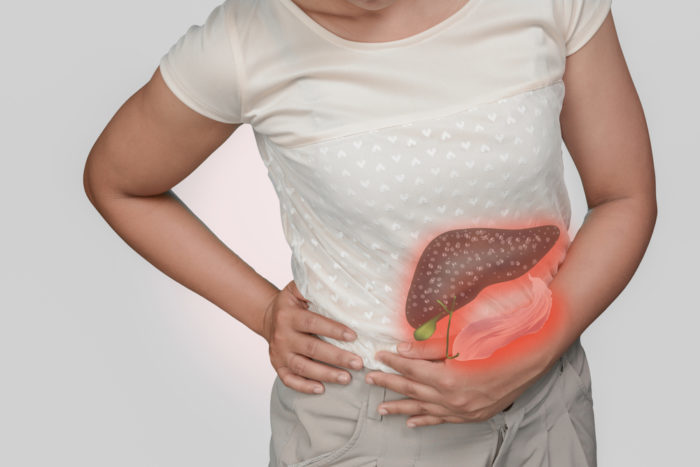Contents:
- Medical Video: What is Pancreatitis? | Q&A
- What are the treatment options for acute pancreatitis?
- 1. Cholecystectomy surgery
- 2. Suction of fluid on the pancreas
- 3. Endoscopic cholangio-pancreatography (ERCP)
- What are the treatment options for chronic pancreatitis?
- 1. Medicines and vitamins
- 2. Operation
- 3. nerve block injections
- Then, what about the treatment of severe pancreatitis?
Medical Video: What is Pancreatitis? | Q&A
Pancreatitis is inflammation of the pancreas which is usually caused by the habit of drinking alcohol and unhealthy lifestyle. Pancreatitis is divided into two types, namely acute pancreatitis and chronic pancreatitis. Because the second characteristic of pancreatitis is different, the type of treatment is different. So, what are the treatment options for pancreatitis based on the type of illness? Here's the explanation.
What are the treatment options for acute pancreatitis?
Acute pancreatitis occurs in a short time or arises suddenly, the condition deteriorates rapidly and can cause complications. Because the development of the disease is fast, people with acute pancreatitis need to be treated immediately at the hospital.
People with acute pancreatitis usually experience vomiting and decreased appetite so that their body fluids decrease dramatically. According to the American College of Gastroenterology, this can be overcome by administering intravenous fluids or infusion for the first 12 to 24 hours, as reported by Everyday Health.
Usually, mildly classified acute pancreatitis will disappear a few days after treatment. However, if acute pancreatitis is classified as severe, the doctor will ensure the cause of pancreatitis before determining the type of treatment.
1. Cholecystectomy surgery
If acute pancreatitis is caused by a build-up of gallstones, the doctor may recommend a procedure for removing the gallbladder, also called cholecystectomy. However, the doctor will see the extent of the possible complications. If pancreatitis is severe and leads to complications, the doctor will treat the complication before doing the surgery.
2. Suction of fluid on the pancreas
Suctioning of the pancreas is done if pancreatitis is caused by an abscess or a pseudocyst infection (fluid sac in the pancreas). After all the fluid deposits have been overcome, remnants of damaged pancreatic tissue are taken to reduce postoperative bleeding.
3. Endoscopic cholangio-pancreatography (ERCP)
ERCP is a procedure that combines the upper digestive tract endoscopy and X-rays to treat blockages in the bile duct or pancreas. If possible, this procedure can be done to remove the gallbladder that has been damaged by acute pancreatitis.
Ideally, the gallbladder should be removed within two weeks after symptoms of acute pancreatitis. Without the gallbladder, you can still carry out activities as usual. It's just that you may experience difficulties when digesting fatty or spicy foods.
What are the treatment options for chronic pancreatitis?
Chronic pancreatitis is a long-standing inflammation of the pancreas; can be weeks to years; His condition is settled, can continue to grow, and never really disappear. Chronic pancreatitis can be caused by the habit of drinking alcohol and an unhealthy lifestyle that has been lived for a long time.
As a result, the function of the pancreas decreases and interferes with the digestive process to make the weight drop dramatically.
There is no specific medicine that can cure chronic pancreatitis. However, the signs and symptoms of chronic pancreatitis can be controlled by:
1. Medicines and vitamins
Because patients with pancreatitis have difficulty eating and drinking, the doctor will usually give medicines and vitamins that can help digestion. Examples of these vitamins are vitamins A, D, E, K, and injections of vitamin B-12 if needed. While chronic pancreatitis drugs can be paracetamol and ibuprofen, weak opioids like codeine and tramadol.
2. Operation
Surgery is one of the treatments for chronic pancreatitis to reduce pressure or blockage in the pancreatic duct. If the patient's pancreatic condition is too severe, the doctor may perform the procedure to remove the entire pancreas and autologous islet transplantation.
Islet is a group of cells in the pancreas that play a role in producing hormones, including the hormone insulin. After taking the pancreas, the doctor will take several pancreatic cells to move them to the liver. Later, the islet cell will produce hormones in a new place and drain it into the blood. So, the patient can still produce insulin without the pancreas.
3. nerve block injections
When the pancreas is inflamed, the pancreatic nerves will stimulate the ‘button’ pain in the spine causing pain. To overcome this, the doctor is likely to do nerve block injections in order to numb the pain.
Then, what about the treatment of severe pancreatitis?
About 20 percent of cases of pancreatitis are classified as severe or severe. This means that the pancreatic organs have experienced complications and the pain that is caused continues to last up to 48 hours.
One of the most common complications in severe pancreatitis is infection of the blood supply network, which can cause sufferers to experience hypovolemia or a decrease in blood volume in the body. Moreover, sufferers also experience vomiting, sweating, and decreased appetite and drinking, which further aggravates hypovolemia.
The good news, the infection can be overcome by giving antibiotics. However, dead or damaged tissue must still be removed by an ERCP endoscope.















